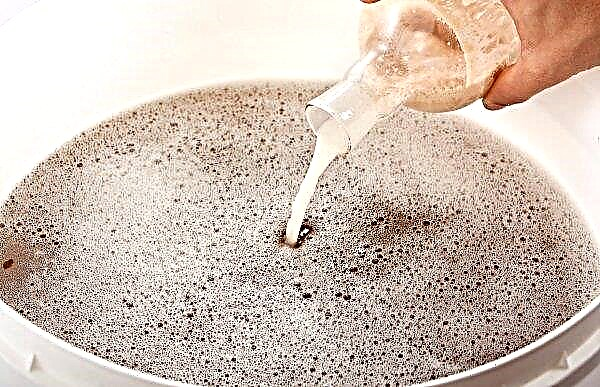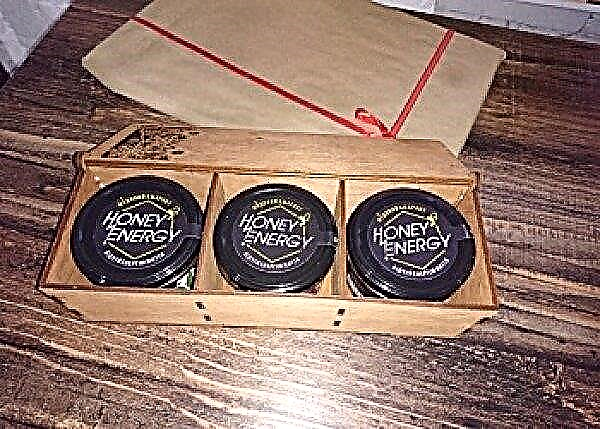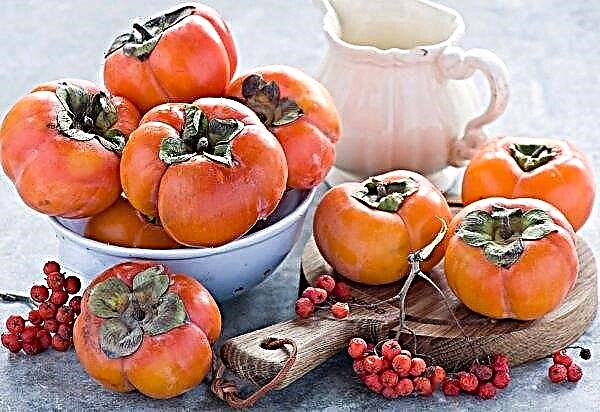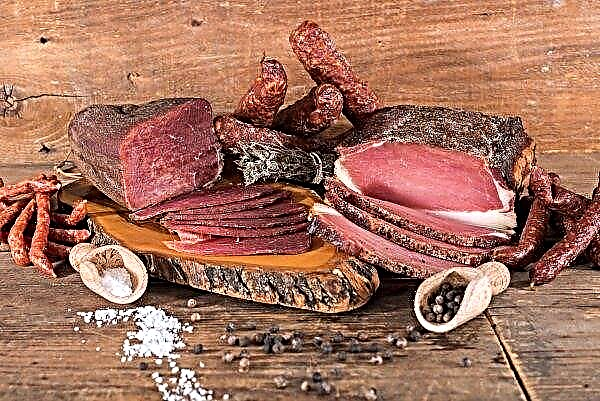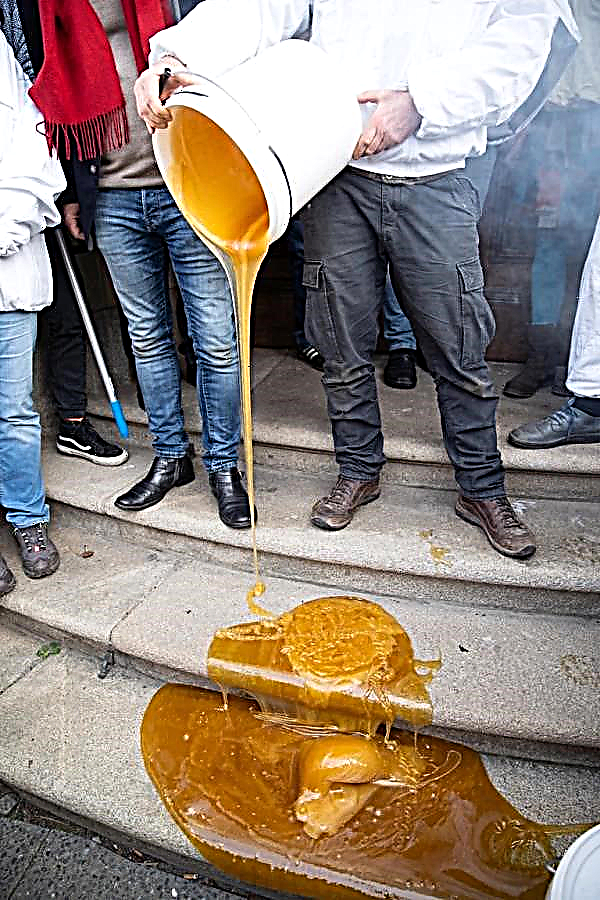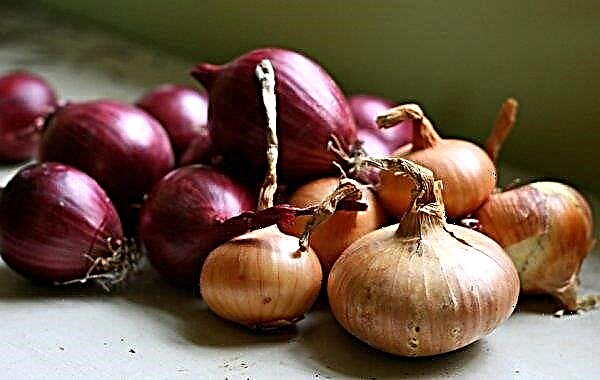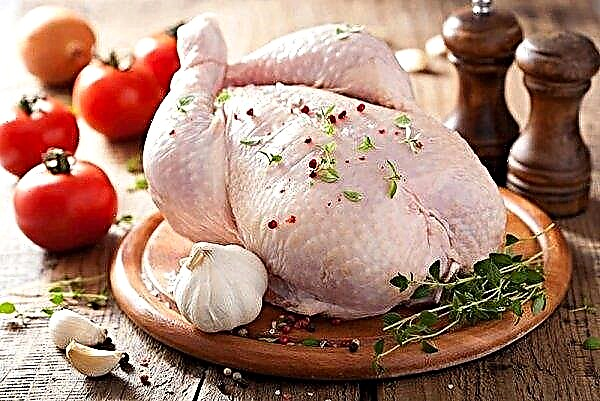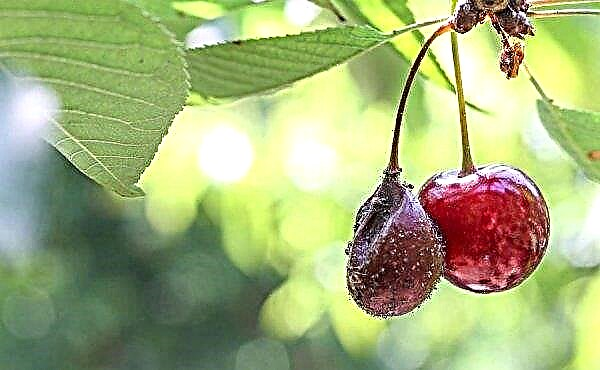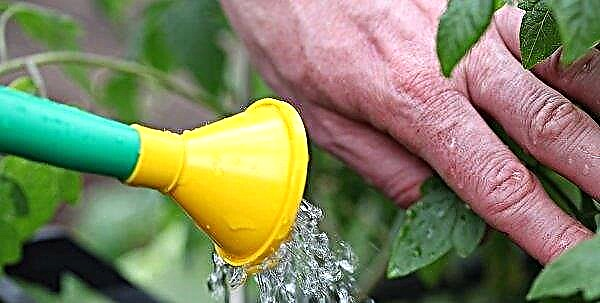If holes appear in the fruits and leaves of bell pepper, grown in an open garden bed or in a greenhouse, then pests have wound up on the site. Who eats pepper and how to get rid of this pest, read below.
Why do holes appear on pepper leaves and who eats them
Small through holes and a change in the shape of the sheet on the pepper can occur due to violations of agricultural regulations. In this case, it is enough to adjust the irrigation regime, apply fertilizers, and the plants will quickly recover. But when holes appeared on the leaves and fruits, and the edges are exactly turned, as if they were cut with curly scissors - this is a sure sign of the presence of pests.
There are 3 types of pests that leave such traces after themselves:
- aphid;
- slug;
- Colorado beetle.
Aphid
This pest is the most common and can affect pepper bushes not only open / closed soil, but also intended for indoor cultivation. Black and green aphids usually settle on pepper. Insects place their colonies on the inside of the leaf. They feed on the fruits, leaves and stems of plants. The main signs of aphids in the area:
The main signs of aphids in the area:
- deformation and wilting of sheet plates;
- the appearance of dried roundish patches on leaves and fruits;
- the appearance of through holes in the leaves;
- shedding of foliage;
- the presence on the leaves of a sticky sweet coating;
- the appearance of black grains, which indicates the development of soot fungus.
Did you know? Many species of aphids are born already pregnant. This means that the egg inside the insect begins to develop much earlier than it is born.
Aphids in the process of life emit a sweet sticky span, covering it with leaves, which makes photosynthesis impossible. In addition, this substance attracts ants, who also would not mind eating sweet pepper fruits, especially if they already have holes.
Ants entering symbiosis with aphids, transfer it to other places, which contributes to the spread of pests in large areas, and for the winter they hide females in their anthills.
The reason for the appearance of aphids lies in the non-observance of the rules of agricultural technology, namely in the improper preparation of the soil in the autumn and spring. Insect eggs can freely winter in the bark of trees and under layers of fallen leaves.
In spring, a generation of females with wings hatch from eggs, which, moving from plant to plant, lay eggs. Each individual lays 50 eggs. The peak of aphid attack usually falls in June, when the second generation of insects hatch. If the autumn turned out to be warm and dragged on for a long time, then in September-October the third generation of parasites appears.
Slug
Slugs belong to land mollusks. They are similar in structure to snails, but they do not have shells. In the wild, they play the role of a natural regulator of the ecosystem of forests and fields. Mostly they come to the plots with new plants and have already managed to take a fancy to 150 cultural varieties, including pepper. In the oral cavity of the slug there is a large amount of chitin (teeth), with the help of which it grinds food. If even rounded holes appear on the leaves of the pepper, and the edges are evenly joined, as if they were aligned with a ruler, this is a sure sign of the presence of slugs in the area. Slug can also eat fruits, leaving characteristic traces on them.
In the oral cavity of the slug there is a large amount of chitin (teeth), with the help of which it grinds food. If even rounded holes appear on the leaves of the pepper, and the edges are evenly joined, as if they were aligned with a ruler, this is a sure sign of the presence of slugs in the area. Slug can also eat fruits, leaving characteristic traces on them.
Important! Slugs can be intermediate owners of worms, so it’s better to remove them manually with disposable gloves.
The land mollusk prefers to lead a nocturnal lifestyle, and during the daytime it hides in thick leaves or in the soil at a depth of 3 cm. At the same depth, the pest lays its eggs. Another sign of slug infection is the presence of whitish paths on the leaves.
Slime, moving, secrete a large amount of mucus, which, when dried, leaves such a mark. In places where pests accumulate, where they wait for the dark time of the day, a lot of mucus remains, which leads to the appearance of fungal diseases and rot.
If there are no conditions on the site for the development of offspring, then the individuals brought along with other plants will simply die.
Successful reproduction of slugs contributes to:
- increased soil moisture;
- air temperature up to + 25 ° С;
- too dense landing.
Colorado beetle
The leaves of pepper are not holed up by the Colorado potato beetle itself, but by its larvae. The insect lays a large number of bright orange eggs on the inside and outside of the leaves. In season, the female can lay up to 1 thousand eggs. To date, more than 100 tools have been developed with the help of which they treat the Colorado potato beetle. The difficulty with this pest is that it quickly adapts to chemicals and becomes insensitive to them.
The difficulty with this pest is that it quickly adapts to chemicals and becomes insensitive to them.
Did you know? Contrary to the name, the birthplace of the Colorado potato beetle is Mexico.
Larvae of the Colorado potato beetle and adults are buried in the soil to a depth of 10 cm and winter there. The life cycle of an adult can last from 1 to 3 years, depending on environmental conditions.
At the initial stages, the beetle larva gnaws holes in the central parts of the leaf, then eats around the edges. Ultimately, bare petioles remain on the bushes.
What to do and how to process peppers
If the leaves on the pepper bushes are eaten, the first thing to do is figure out which pest settled on the site, and depending on this, decide how to deal with it.
Planting aphids can be protected using biological and chemical agents. The former are completely safe for the ecosystem, but not always effective if the number of insects is too large. The second ones give good results, but their use is dangerous at the stage of active fruiting.
Biological preparations include:
- Fitoverm - created on the basis of soil fungus. 8 ml of the substance are dissolved in 1 liter of water and the plants are sprayed 2 times with an interval of 15 days.
- Akarin - active substance - extract from soil fungus. The dosage for 1 liter of water is similar to the above.
 Chemicals include:
Chemicals include:- Actellik - is a systemic contact drug. It acts instantly. Dosage: 500 g / l of water. Consumption according to the instructions.
- "Fufanon" - not dangerous for beneficial insects. Effective against most pests. 10 ml of the drug is dissolved in 1 liter of water, then another 9 liters of water are added.
Important! Using chemical and biological products to protect plants from pests, wear a protective suit, mask, gloves and glasses. And those and others, spraying, equally negatively affect the mucous membranes.
To cope with the slug that gnaws sweet peppers, powdered hot peppers will help. It must be scattered between the rows. In addition, you can dust the bushes and soil under them with ash. If putrefactive processes are noted on the bushes, then the ash must be mixed 1: 1 with Fundazol.
The consumption of powder per 1 bush is on average 50 g. Preparations with metaldehyde in the composition - “Slug”, “Thunderstorm” are effective against slugs. The first involves a single abundant cultivation of land at the rate of 30 g / 10 m². The second is used as a dusting plant for bushes and soil at the rate of 15 g / 5 m².
With the Colorado potato beetle, "Fufanon" will help. It is bred in the same dosage as for aphids. It is very effective in the presence of a large number of pests. 20 days after the use of "Fufanon" spend processing biological product "Colorado."
150 g of the drug is diluted in 10 l of water and sprayed on a sheet. Colorado makes it possible to avoid relapse, and increase the immunity of weakened plants.
In addition to processing drugs, it is necessary to do agricultural technology. If any of the 3 pests listed above appears:
If any of the 3 pests listed above appears:
- Remove affected parts of plants. This will avoid the spread of disease. Work all sections with wood ash.
- To carry out the loosening of the soil to a depth of 5 cm near the bushes and 10 cm between the rows.
- Adjust the watering mode.
- After loosening, the soil must be mulched: peat mixed with sand and ash, when slugs appear, compost in the presence of Colorado potato beetles and aphids.
- Collect pests manually, using gloves both before and after drug treatment.
Preventive measures
The main preventive measure that allows you to protect yourself from pests is high-quality soil preparation in the autumn-spring period. After harvesting from the site, you need to remove fallen leaves, weeds and their roots. Cultivate the soil to a depth of 20-30 cm and irrigate with 3% solution of copper sulfate.
After 10 days, add 10 kg of manure per m² + 500 g of superphosphate and dig the soil again to a depth of 20 cm. In the spring, similar manipulations are performed. Other preventative measures:
Other preventative measures:
- removal of lower leaves and branches from bushes in order to avoid their contact with the soil;
- chemical treatment in unfavorable regions where pest outbreaks are often observed;
- fertilizing according to the schedule according to the periods of plant vegetation;
- moderate watering;
- loosening the soil and mulching it after each wetting - natural or artificial.
If the plants were provided with timely help, then pepper harvest can be saved in 60–80% of cases, depending on the degree of damage. But it is better not to allow the spread of parasites, for which it is necessary to follow the rules of agricultural technology.

